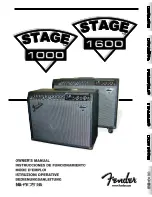
HPLC-Chip Cube Interface User’s Guide
67
Operation
5
Spray Ignition
Figure 26
Good nanospray under highly aqueous conditions
Depending on the solvent composition the observed Taylor cone will vary in
appearance; at high aqueous composition the plume will appear as a straight
jet which will change to a fan-type plume as the organic solvent increases.
While the appearance of the spray can vary, stable signal and spray indicates a
properly operating system. The spray should not angle strongly to either side.
The key factors for spray formation and stability are the liquid flow and
capillary voltage setting.
Solvent Flow Rate
Try to get a feeling for what a flow rate of 300 nL/min looks like. If you suspect
a problem with flow stability, run an
HPLC-Chip System Test
(see
Agilent 1260
Infinity HPLC-Chip Cube Interface G4240A Service Manual
,
HPLC-Chip
System Test
) and fix any problems.
Capillary Voltage
In order to initiate a nanospray, a potential difference between the MS end cap
(see the Chip Cube Interface Adapter guide) and the nanospray emitter is
required. Set the capillary voltage at 1800 V and increase the voltage in steps
of 50 V until the spray ignites. Use a V
cap
setting that is 50 V higher than the
spray ignition point. The maximum recommended voltage is 2400 V. The
capillary current should not be greater than 100 nA.
HPLC-Chip tip
counter electrode
end cap
nanospray
HV-capillary
Содержание 1260 Infinity
Страница 1: ...Agilent 1260 Infinity HPLC Chip Cube Interface G4240A User Manual ...
Страница 4: ...4 HPLC Chip Cube Interface User s Guide ...
Страница 8: ...8 HPLC Chip Cube Interface User s Guide Contents ...
Страница 36: ...36 HPLC Chip Cube Interface User s Guide 3 Site Preparation Site Requirements for the G4240A Chip Cube ...
Страница 52: ...52 HPLC Chip Cube Interface User s Guide 4 Installation Chip Cube Hardware Installation ...
Страница 80: ...80 HPLC Chip Cube Interface User s Guide 6 Maintenance Procedures Updating the Chip Cube Firmware ...
Страница 95: ......
















































